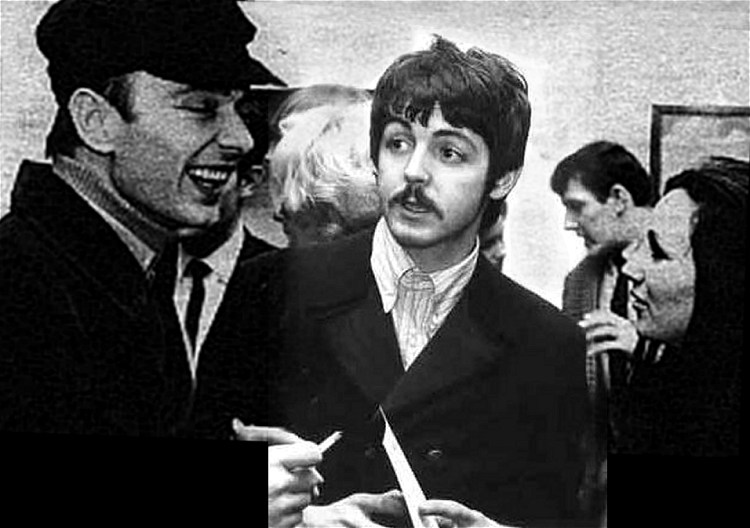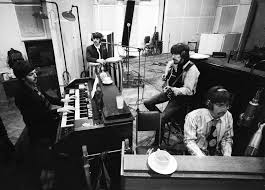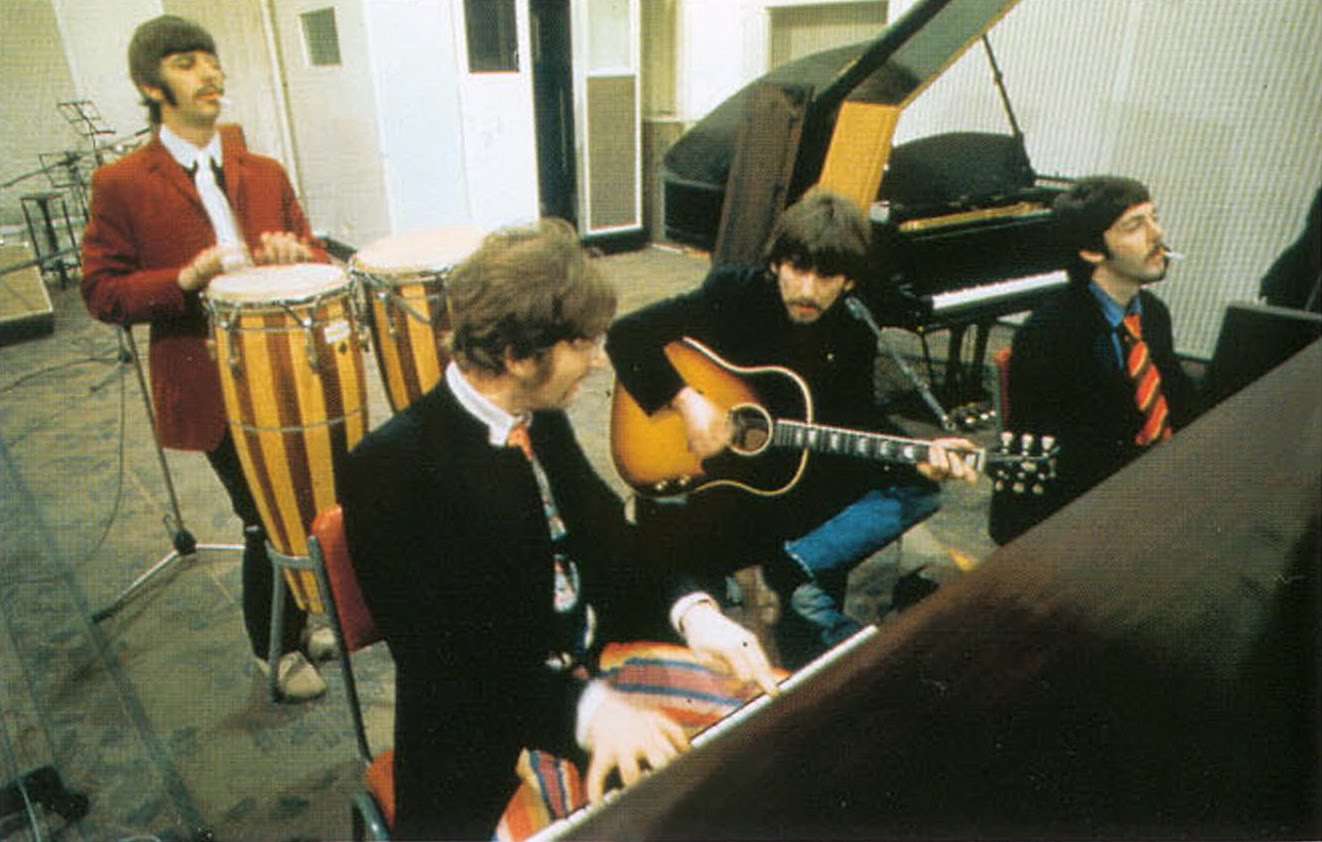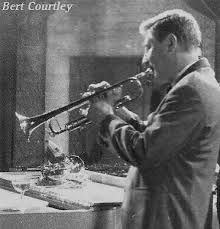There was no studio session on this day but The Beatles were still working on "A Day In The Life".
Paul attended a party hosted by Julie Felix at a Chelsea art studio.

There was no studio session on this day but The Beatles were still working on "A Day In The Life".
Paul attended a party hosted by Julie Felix at a Chelsea art studio.

Studio Two, EMI Studios
Reduction mixdowns of "A Day in the Life", vacating tracks for more overdubbing, began this 7:00 pm to 1:10 am session. Take six was marked "best" and so was adorned with another John Lennon lead vocal, Paul's bass and Ringo's drums. Paul's vocal also appeared for the first time. Here was a prime example of how the Lennon-McCartney songwriting partnership had evolved: John's song had a beginnng and an end but no middle; Paul's had a middle but no bginning or end. But the two pieces came naturally together, creating a complete picture and the impression that they were intended as one. The illusion was compounded by the fact that Paul's vocal, the first line of which was "Woke up, fell out of bed", occurred immediately after the alarm clock had been sounded on the original recording to mark the end of the first 24-count gap. Making good use of the happy coincidence, the alarm clock was kept on the track permanently.
Paul re-recorded his vocal on February 3, instantly wiping out this January 20th version, which served only as a rough guide, ending on an expletive after he had made an error.

Studio Two, EMI Studios, London
The start of "A Day in the Life", the song which was to become the stunning finale of the Beatles' next album. The first four takes were recorded in this 7:30 pm to 2:30 am session.
At this stage the Beatles only knew that something would later be taped for the song's middle section. Precisely what they were uncertain, but to mark out the place where the item would go they had Mal Evans count out the bars, one to 24, his voice plastered with tap echo and backed by a tinkling piano, and to flag the end of this section an alarm clock was sounded.

Paul McCartney gave an interview on this day for the Granada Television late-night show Scene Special.
The interview was conducted by producer Jo Durden-Smith, and was recorded in a ground-floor studio at 3 Upper James Street in central London. The subtitle of the show was It's So Far Out It's Straight Down, and was directed by John Sheppard.
McCartney discussed the London counterculture, appearing in four separate sequences in the 29-minute programme. Also included were the editorial board of International Times, the Indica Bookshop's founder Barry Miles, footage of Pink Floyd performing Interstellar Overdrive at the UFO Club, a 'happening' at Piccadilly Circus, and footage of a poetry gathering at the Royal Albert Hall featuring Allen Ginsberg, Adrian Mitchell and Lawrence Ferlinghetti.
If you don't know anything about it [the counterculture], you can sort of trust that it's probably gonna be all right... It's human beings doing it, and you know vaguely what human beings do.
The straights should welcome the underground because it stands for freedom... It's not strange it's just new, it's not weird it's just what's going on around.
It's So Far Out It's Straight Down was broadcast in the north of England at 10.25pm on Tuesday March 7, 1967.
Source: Beatles Bible
The Beatles began recording A Day in the Life, with the working title In The Life Of..., on January 19, 1967. Two days previously, however, two stories were published in the Daily Mail newspaper which provided John Lennon with inspiration for the lyrics.
Lennon wrote the song at a piano in his home Kenwood, while reading a copy of the day's newspaper. One article inspired the song's first two verses: a brief news item reporting the coroner's verdict into the death of Tara Browne, the 21-year-old heir to the Guinness fortune.
Browne, a close friend of Lennon and Paul McCartney, had crashed his Lotus Elan car on December 18, 1966, after failing to notice a red light. The accident happened in London's South Kensington; the car collided with a stationary van in Redcliffe Gardens after swerving to avoid an oncoming Volkswagen car.
I was writing A Day In The Life with the Daily Mail propped in front of me on the piano. I had it open at their News in Brief, or Far and Near, whatever they call it. I noticed two stories. One was about the Guinness heir who killed himself in a car. That was the main headline story. He died in London in a car crash.
In Hunter Davies' 1968 authorised biography of The Beatles, Lennon explained how the words of the song were indirectly inspired by the events.
I didn't copy the accident. Tara didn't blow his mind out. But it was in my mind when I was writing that verse.
However, in his 1997 authorised biography Many Years From Now, Paul McCartney downplayed suggestions that the song was directly about Browne's death.
The verse about the politician blowing his mind out in a car we wrote together. It has been attributed to Tara Browne, the Guinness heir, which I don't believe is the case, certainly as were were writing it, I was not attributing it to Tara in my head. In John's head it might have been. In my head I was imagining a politician bombed out on drugs who'd stopped at some traffic lights and didn't notice that the lights had changed. The 'blew his mind' was purely a drugs reference, nothing to do with a car crash.
The song's final verse was taken from the Daily Mail's Far And Near column. "There are 4,000 holes in the road in Blackburn, Lancashire," it read, "or one twenty-sixth of a hole per person, according to a council survey."
There was still one word missing in that verse when we came to record. I knew the line had to go 'Now they know how many holes it takes to... something, the Albert Hall.' It was a nonsense verse really, but for some reason I couldn't think of the verb. What did the holes do to the Albert Hall?
It was Terry [Doran, a former car dealer and friend of Brian Epstein's who later became head of Apple Music] who said 'fill' the Albert Hall. And that was it. Perhaps I was looking for that word all the time, but couldn't put my tongue on it. Other people don't necessarily give you a word or a line, they just throw in the word you're looking for anyway.
In 1967 English playwright Joe Orton was asked by producer Walter Shenson to write a script for The Beatles' third film.
Shenson, producer of the films A Hard Day's Night and Help!, asked Orton to rework a draft script written by a now-unknown writer. In Orton's diary entry for January 12, 1967 he noted that Shenson had called Orton's agent and said that he had a script. Although Shenson considered it to be "dull", he asked if Orton might take a look. Orton agreed, and had read it by 15 January when he wrote:
Like the idea. Basically it is that there aren't four young men. Just four aspects of one man. Sounds dreary, but as I thought about it I realised what wonderful opportunities it would give.
Orton met Shenson on January 16, and began writing what would become Up Against It. He also met Paul McCartney and Brian Epstein on January 24th. A contract was drawn up, which allowed Orton to buy back the script rights if it were rejected.
Paul McCartney and George Harrison watched Donovan performing at the Royal Albert Hall in London on this day.
Donovan was a friend to The Beatles, particularly McCartney. He had been present during the writing of Yellow Submarine and Eleanor Rigby, and had suggested the line "Sky of blue and sea of green". In 1968 he studied Transcendental Meditation alongside The Beatles in India.
The Beatles in-between recording at EMI Studios in London.
The Beatles in-between recording at EMI Studios in London.
Studio Three, EMI Studios, Abbey Road
This session, which began at 2.30pm and ended at 11pm, saw the second set of session musicians record contributions to Penny Lane, following the January 9, 1967 addition of flutes of trumpets.
On this day seven instruments were recorded: two trumpets, played by Bert Courtley and Duncan Campbell; two oboes, played by Dick Morgan and Mike Winfield, who also both added cor anglais parts; and a double bass played by Frank Clarke.
The cor anglais were used during the instrumental passage, but went unused in the final mix. They can be heard on Anthology 2. The double bass, meanwhile, played just a three-second passage of descending notes as the banker sits waiting for a trim.
The Beatles considered Penny Lane to be complete at this stage, and two mono mixes were created at the end of the session. However, on 17 January the piccolo trumpet solo was added, rendering the mixes unnecessary.
